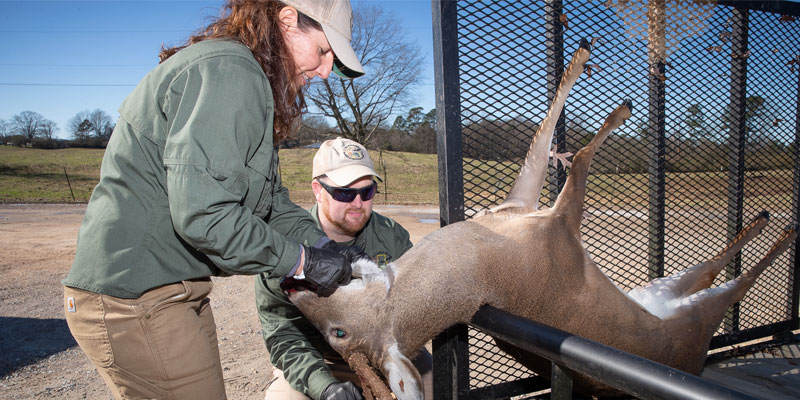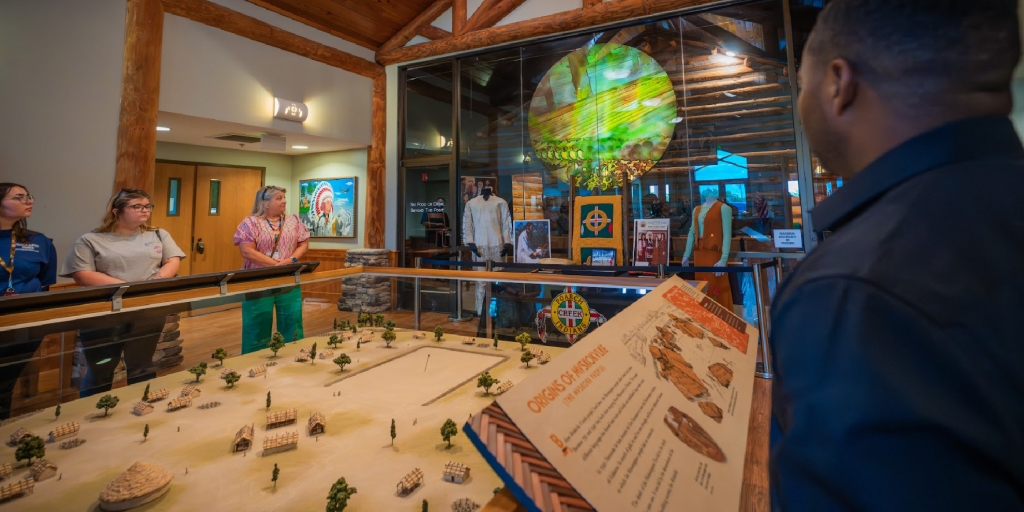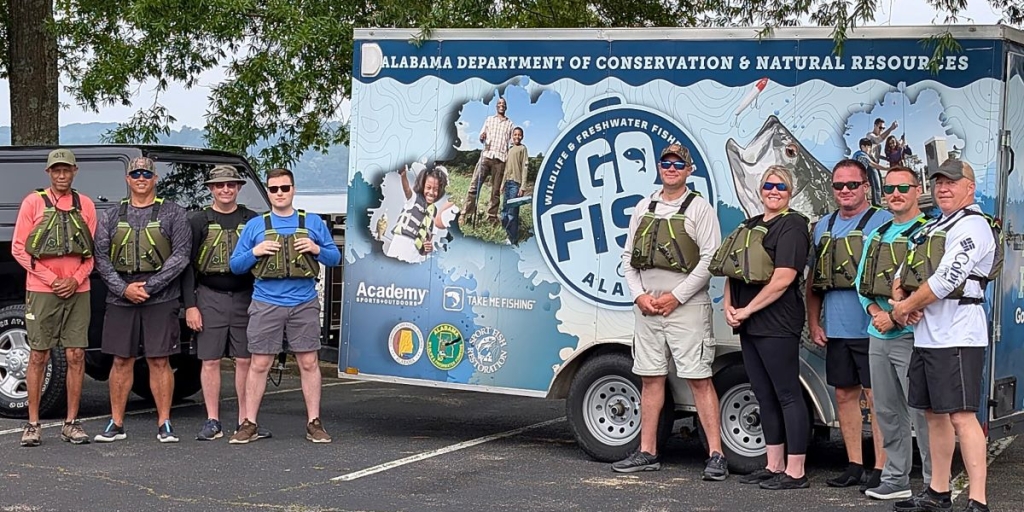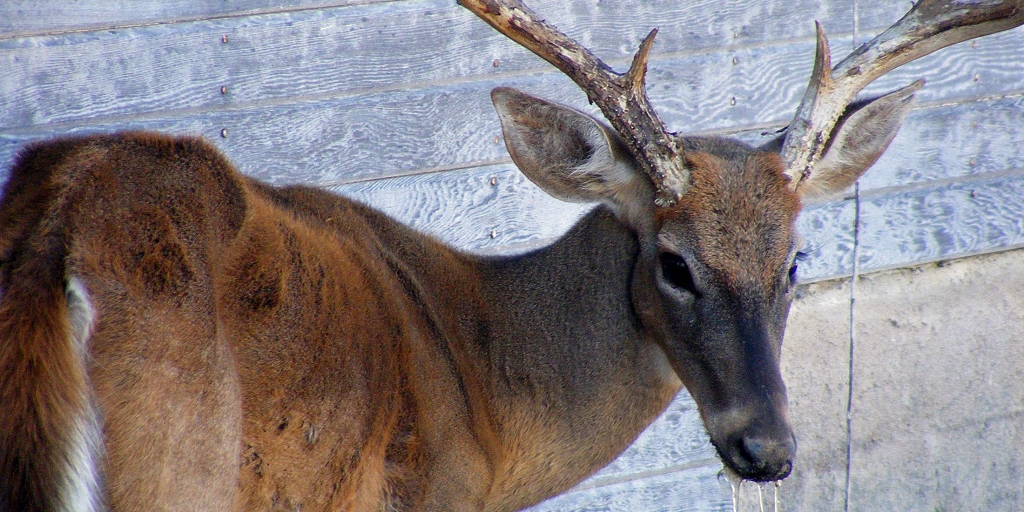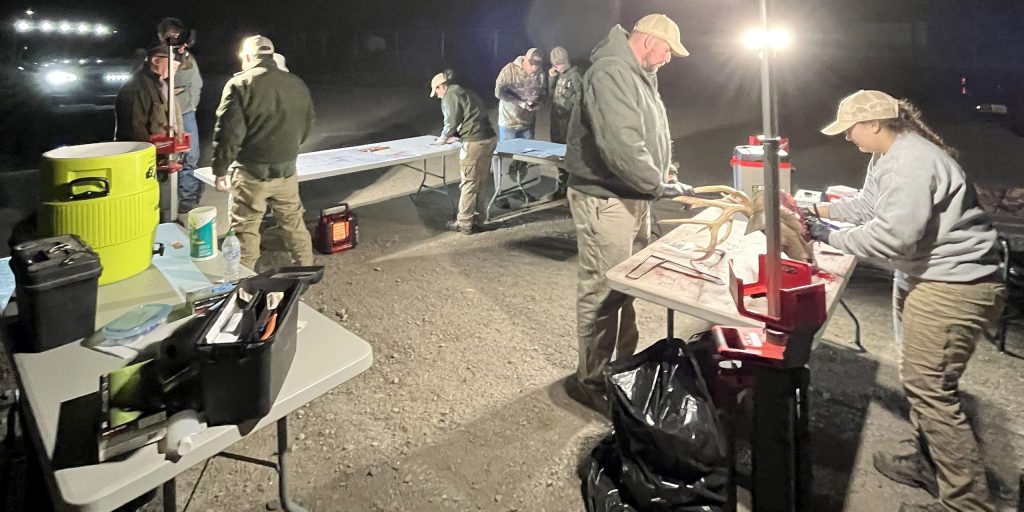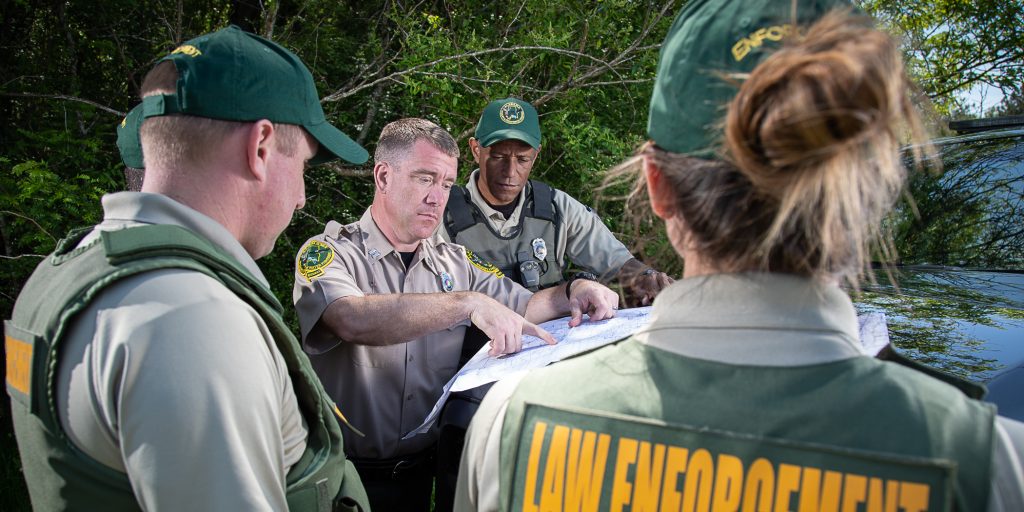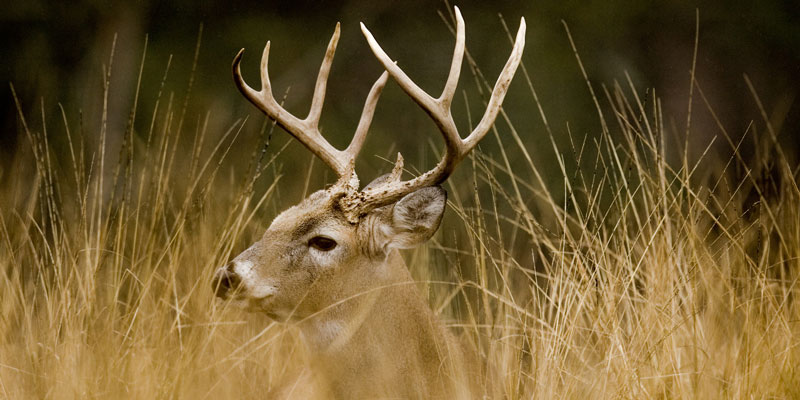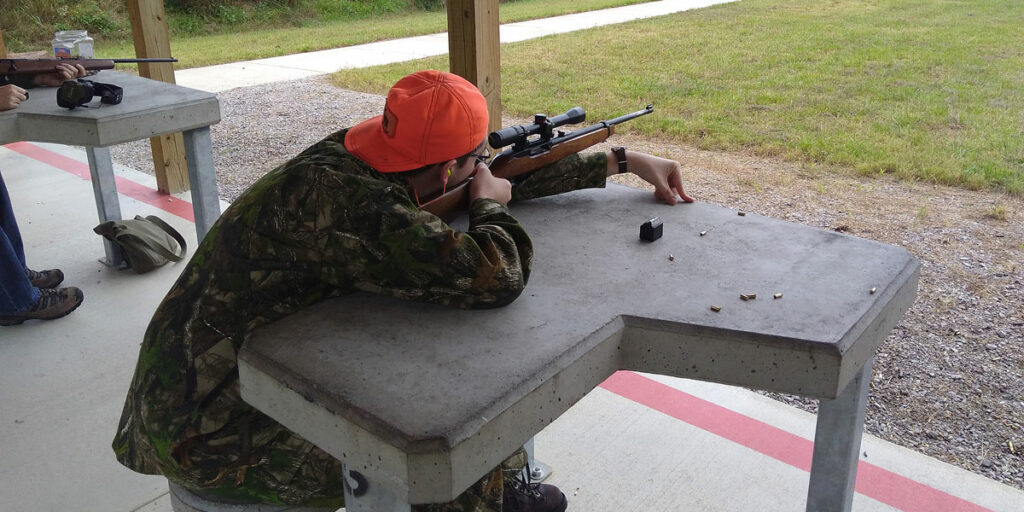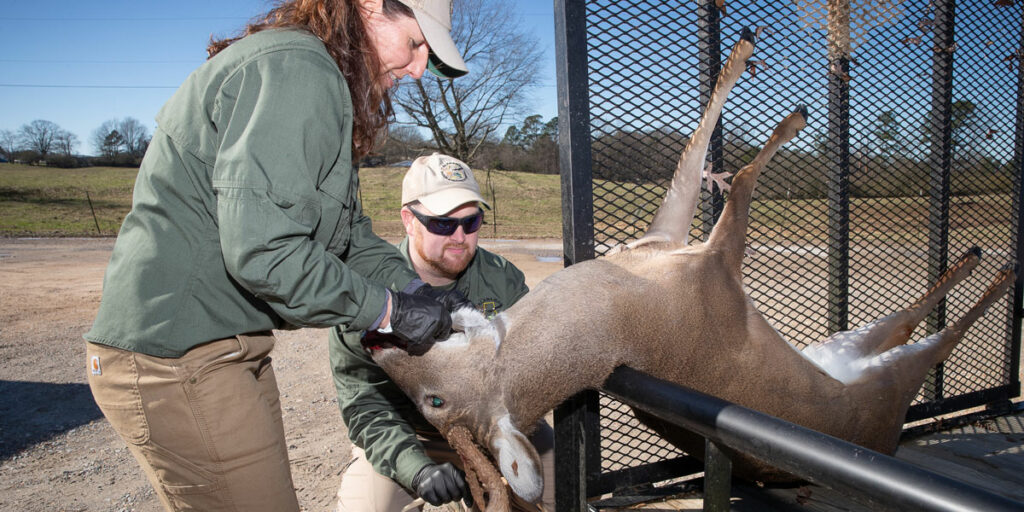With archery season underway and the opening day of the gun deer season on the horizon, the Alabama Wildlife and Freshwater Fisheries (WFF) Division is traveling the state to give hunters and the general public updates on chronic wasting disease (CWD) that affects members of the deer family.
First, CWD has NOT been detected in Alabama’s deer herd, which is estimated at about1.5 million animals.
However, CWD has been confirmed in the neighboring states of Mississippi and Tennessee, which caused the WFF’s CWD Response Plan to be implemented. Positive tests near Pontotoc, Miss., and Franklin, Tenn., were within a 50-mile radius of Alabama, and a specific response plan was initiated for those areas in northwest Alabama.
“We have had a CWD Response Plan in place since 2012,” said Amy Silvano, Assistant Chief of the Wildlife Section, at the recent seminar in Prattville. “When CWD was confirmed in Wisconsin, the first time the disease was detected east of the Mississippi, our agency started surveilling for the disease then and formalized the response plan. This is a fluid document. We are learning things every day. As we do, we update our plan.”
Visit www.outdooralabama.com/CWD-Info and scroll down the page to view the Alabama CWD Strategic Surveillance and Response Plan. CWD has only been shown to affect members of the deer family, including whitetails, blacktails, mule deer, elk, moose and caribou.
CWD is a fatal neurological disease, called transmissible spongiform encephalopathy (TSE), which affects the deer family and causes lesions on the brain. As the disease progresses, the affected animal will develop holes in the brain and eventually die. Infected animals may be 5 years old or older before they show symptoms.
“There is a lot of misinformation about what a CWD-infected deer looks like,” said Chris Cook, WFF Deer Program Coordinator. “Some of the deer that have been found positive for CWD look perfectly healthy. Most of the CWD-positive deer have been hunter-harvested deer with no outward signs of CWD.
“When the deer start showing symptoms, it can be a wide range of symptoms. The most common is just abnormal behavior. They don’t act right, because it’s a disease of the central nervous system. They have a drooping, sick posture. You will see that in a deer that’s been wounded by a hunter or hit by a car, so that alone doesn’t indicate a deer has CWD. Other symptoms include trouble with balance, excessive salivation or the loss of weight, but there are a lot of reasons deer lose weight. ”
Cook said the Alabama Department of Conservation and Natural Resources (ADCNR) is charged with managing the wildlife resources of the state for the benefit of the public now and for future generations.
“Any disease like CWD has the potential to affect any wildlife population,” Cook said. “Anything like that gets our attention. That’s why we do all we can to head it off. And once it shows up, we do everything we can to minimize its impact. It not only affects the wildlife resources but also our hunting heritage. A lot of rural areas in Alabama depend heavily on income from hunters and hunting-related activities. Hunting generates an impressive $1.8 billion economic impact in Alabama.”
The first case of CWD was discovered in Colorado in 1967. Over the next 30 years, the disease spread very slowly, only taking in a 15- to 20-county region on the Colorado, Nebraska and Wyoming borders. In the late 90s, CWD was detected in Saskatchewan. That incident was traced to live elk from South Dakota that were transported to Canada. CWD continues to spread and now has been found in 26 states and three Canadian provinces. South Korea and Norway also have detected CWD. South Korea’s CWD-positive animals can be traced back to the live transport of deer from infected areas. Over the past decade, the movement of live cervids or infected carcasses by humans has contributed to the increased spread of the disease.
Alabama has long had regulations that banned the importation of live deer. The regulations were amended a couple of years ago to prohibit the importation of deer carcasses from all states and countries. Visit www.outdooralabama.com/cwd for regulations about importing deer parts from out-of-state.
Regulations allow for the importation of certain parts of the deer but not whole carcasses. Permitted parts include:
- Meat from the family Cervidae (white-tailed deer, mule deer, elk, moose, fallow deer, red deer, sika deer, caribou, reindeer, etc.) that has been completely deboned
- Cleaned skull plates with bare attached antlers, if no visible brain or spinal cord tissue is present
- Unattached bare antlers or sheds
- Raw capes, if no visible brain or spinal cord tissue is present
- Upper canine teeth, if no root structure or other soft tissue is present
- Finished taxidermy products or tanned hides
- Velvet-covered antlers are prohibited unless part of a finished taxidermy product.
The disease is primarily spread by body fluids such as saliva, urine and feces. The infectious agent, called a prion, can even survive outside the animal’s body.
Cook said there is no evidence at this time that CWD can be transmitted to humans.
“Officials have been following hunters who have been hunting in these CWD areas for a long time and, to date, there has not been any connection between human illness and consuming venison from CWD-positive deer,” he said. “We are not a food safety agency. We defer to the Centers for Disease Control (CDC) recommendations.”
The CDC recommends that hunters who harvest deer in areas with CWD should have the deer tested for the disease before consuming the meat. If the test comes back positive, the CDC recommends the proper disposal of the venison. That venison should not be thrown out by the individual; rather, contact a WFF official or enforcement officer who will ensure its proper disposal.
The WFF’s sampling program will include hunter-harvested deer, roadkills and reported sick deer with a goal of testing 1,500 animals for CWD. WFF is working with Cornell University to help identify areas with the highest likelihood of infection.
Hunters can aid the WFF sampling program by dropping off their deer heads at the WFF CWD Sampling Station freezers located around the state. The goal is to have at least one freezer in each county.
“Our district offices will have freezers,” Cook said. “A lot of our WMAs (wildlife management areas) will have them. People who want to have their deer tested can bring the heads with 3 to 4 inches of the neck intact. The antlers can be taken off. For deer the hunters want to mount, they can go ahead and cape it out. The samples that we use come from the lymph nodes in the upper neck.”
Hunters who drop off deer heads are required to fill out tags that include contact information and location where the deer was harvested. A tear-off tag has an identification number that the hunter should retain. A list of locations will be posted on the CWD page on outdooralabama.com.
“We also started the Sick Deer Report last year,” Cook said. “If you see a sick deer or a deer that doesn’t look or act right, call our district office and give the information to the people who answer the phone. Provide your contact information, location and the symptoms you observed. Somebody will follow up to see if that deer can be sampled.”
Lt. Michael East, the WFF officer in charge of the game breeders program, said the disease is an issue that affects both captive deer and wild deer.
“CWD does not discriminate,” East said. “We have to protect the resource for all involved.”
East said a recent case was made in 2016 for the illegal importation of live deer in Alabama, and the violator was fined $750,000 and lost his game breeder license.
The WFF Enforcement Section has also implemented procedures to intercept the potential illegal importation of deer carcasses into the state with surveillance along state borders in an effort to keep CWD out of the state.
Florida is the latest state to implement a deer carcass importation ban. With exceptions for Alabama and Georgia, the Florida Fish and Wildlife Conservation Commissioner (FWC) issued an executive order that bans the importation of deer carcasses, effective Friday, Nov. 1, 2019. The executive order allows exceptions for white-tailed deer legally harvested in Georgia or Alabama with certain requirements. The person who harvested the deer must possess an FWC Georgia/Alabama Carcass Importation Permit prior to the carcass being imported into Florida. The hunter must report the carcass importation within 24 hours of entering Florida using the FWC’s online Georgia/Alabama Carcass Importation Reporting Form and must dispose of any remains using FWC-approved disposal options outlined at www.myfwc.com. Also, white-tailed deer legally harvested from Georgia or Alabama properties that are bisected by the Florida state line and under the same ownership are exempt from importation permit, reporting and disposal requirements.
Meanwhile, the Alabama WFF Division is promoting a campaign titled “Don’t Bring It Home” to highlight the ban on the importation of deer carcasses.
Concerned citizens have numerous opportunities to come to a town hall-style meeting to ask questions concerning CWD. Go to www.outdooralabama.com/node/2747 for a list of upcoming CWD seminars.
As WFF Assistant Director Fred Harders said earlier this year, “We don’t have it. We don’t want it.”
David Rainer is an award-winning writer who has covered Alabama’s great outdoors for 25 years. The former outdoors editor at the Mobile Press-Register, he writes for Outdoor Alabama, the website of the Alabama Department of Conservation and Natural Resources.




